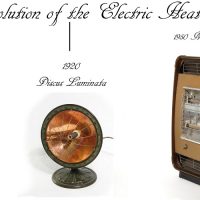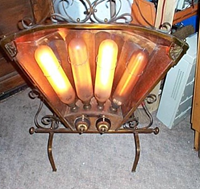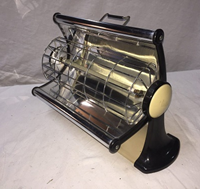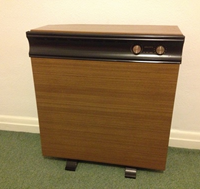History of the electric heater
 Interesting … history of the electric heater.
Interesting … history of the electric heater.
It’s easy to take heating for granted, we rarely give it a second thought unless we have to go without it.
Why not spare a thought for all the enterprising individuals throughout history who strove to provide us with these modern conveniences we would struggle to live without? In the 19th century, engineers and inventors were fascinated by electricity and could see that it had far reaching potential to change our lives for the better. One of the many applications they foresaw for electricity was to provide convenient and reliable heat for the home. It’s from these humble beginnings that modern electric heaters were conceived.
The dawn of a new era
The earliest electric heaters used bulbs, part of the credit is given to Thomas Edison who patented the lightbulb in 1880. However, as electric heaters also needed a durable, high-resistance wire in order to work, proper dues are also given to Albert Leroy Marsh who developed the alloy ‘chromel’ in 1905. Chromel, or nichrome as it is now known, was over 300 times stronger than other available alloys at the time and revolutionised electrical engineering. The high 1,400 °C heating point of nichrome and its corrosion-resistant properties mean that it’s still widely used even today.
Early adoption of electric heating

Some of the earliest heaters were created by American company General Electric in the early 1890’s. It’s somewhat unsurprising that these first heaters used elongated glass bulbs to output heat as General Electric was created from an amalgam of two companies, one of which was headed up by Thomas Edison himself.
Across the pond in 1891, renowned engineer Herbert John Dowsing had demonstrated an all-electric cooking method at the Crystal Palace Electrical Exhibition. During this period, his business Dowsing Radiant Heat Company was also producing some of the earliest electric heaters using similar long cylindrical bulbs. Though rudimentary in design, these are some of the first products which look recognisably like a heater and often had copper backing to help radiate the heat outwards into the room. H. J. Dowsing can be credited for giving electric heating domestic application within the UK.
The turn of the century saw other British innovations in the field of electric heating and the beginnings of portable technologies. In 1912, Charles Reginald Belling set up his own business out of his shed in Enfield manufacturing electric heaters. Early models of these heaters looked like table lamps with a copper reflective dish at the back to project heat out into the room. Belling & Co would go on to see roaring success with their business and are still a major brand within British electricals.
 Electric Heating through the early 1900s
Electric Heating through the early 1900s
Electric radiators began to see widespread adoption and by this point portable oil-filled models were also available. One of the most iconic electric heating appliances to come out of this era is the electric fire or ‘bar heater’.
Though not terribly efficient, the bar heater’s popularity lasted for years due to its versatility and simple plug-in-and-go design. In the 1950s, Belling & Co were seeing a big expansion in their company and were producing numerous models of electric bar heaters for domestic use.
Demands in energy from the 1960’s and beyond

As electric heating became increasingly popular, the Electricity Boards in the UK were presented with a bit of a problem. Usage of electricity soared during the day but took a severe decline at night, and as power stations couldn’t be powered down, they had to create some way of creating demand during this timeframe. To solve this issue in a way that was beneficial for everyone, domestic storage heaters were developed in the early 1960s and provided a way for people to heat their homes cheaply. Storage heaters worked by using electricity overnight to slowly heat up thermal bricks in the heater body. This heat could be released during the day as and when needed, then recharged overnight. These heaters worked in tandem with cheaper rates set by the Electricity Boards to make the use of surplus night-time electricity more attractive.
Electric heating in the digital age
Toward the end of the 20th century, electric heating had come a long way. Improvements in the construction of electric heaters and radiators made them a much more efficient choice for home use. Greater understanding of heating elements has allowed modern electric heaters to be more responsive and a range of different electric heating methods have been developed since.
In recent years, there has been a much greater emphasis on energy-efficiency, especially as we’re becoming more conscious of how we use fossil fuels to create our electricity. When compared against electric heaters from 50 or 60 years ago, modern heaters provide a whole host of features that make them much more energy-efficient and controllable.
